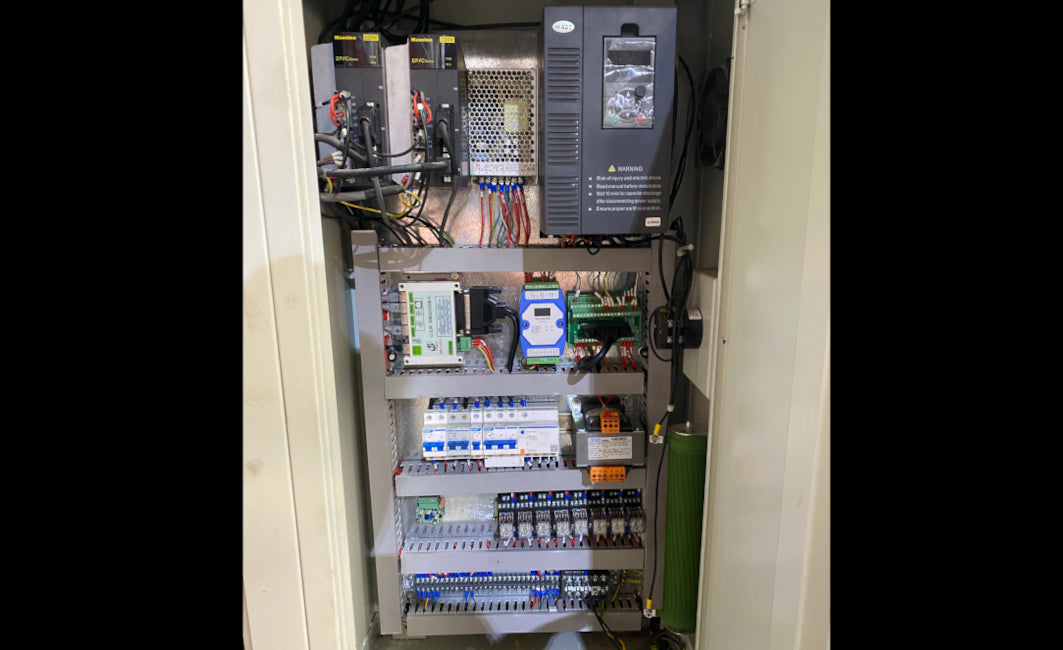I was asked to fix a lathe which had been bought back to the factory and stripped for spares since an inexperienced operator damaged it while trying to diamond cut a wheel without proper training. Any good lathe manufacturer will keep at least one machine just for spare parts, to minimise downtime for any customers who have run into problems.

Some parts were still in storage but others had to be supplied. Without any wiring diagram or photos of the layout prior to stripping, it did take a few hours to find out the correct location of each wire.

Once the wiring was finished, I still had to diagnose the original fault.

The operator had said that the lathe had never impacted a wheel. I find this is quite a common story... "the lathe just started leaving lines in the wheel, we haven't had any impacts or crashes at all". Something people will often say to avoid getting charged and try to claim as a warranty issue instead. This is counter intuitive as more often than not, after a small impact we can remotely fix the issue and have the lathe operating as normal at no cost within a few minutes. When people claim no such impact happened, we are left no choice but to come and inspect the lathe in person. This not only causes their workshop a few days downtime, but if it is found that the lathe has impacted a wheel then there will also be costs involved which could have been avoided by being transparent from the beginning.
What the majority of people don't realise is that to an experienced CNC technician, its actually quite easy to tell if the lathe has had an impact. On this particular lathe the end of the cutting tool holder was snapped, leaving the tip overhanging 2 cm. This in itself would cause chatter and leave lines in a wheel but I knew this impact would have caused some more serious damage internally.
After various tests with the servos, it was apparent that there was some internal damage to the servo motor, which can only happen after a seriously hard impact. After digitally tightening the servos, with very little difference it was obvious that the servo motors needed changing.

Once the motors were replaced, the servos needed to be reprogrammed. This is a fairly complicated job requiring mathematical calculations and measurement of the lathe X & Z axis screw pitch.

After this a wheel was test cut and the lathe was performing as it should. Another happy customer! For any CNC repairs contact alex@midlandwheelrepair.co.uk

